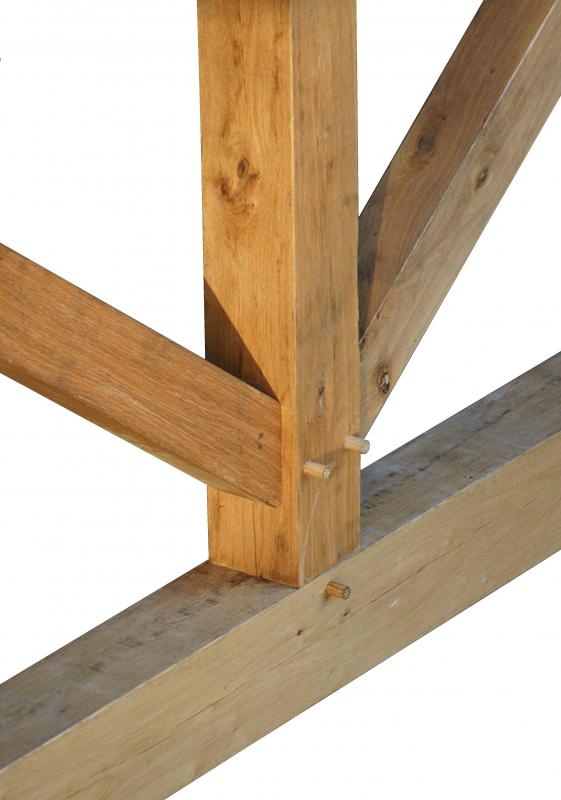At HomeQuestionsAnswered, we're committed to delivering accurate, trustworthy information. Our expert-authored content is rigorously fact-checked and sourced from credible authorities. Discover how we uphold the highest standards in providing you with reliable knowledge.
What are the Different Types of Woodworking Joints?
There are several types of woodworking joints used in joinery. Some of these are the butt joint, the mitre joint, the spline joint, the tongue and groove joint, the half lap joint, the dove-tail joint, and the mortise and tenon joint. Each of these woodworking joints are used to join wood in different ways and for different purposes. The type of joint a joiner uses can give stability or decoration to the wood. Most of these joints are joined by glue, screws, nails, or dowels.
The butt joint is possibly the simplest of all the woodworking joints and is used in the making of boxes or frames. It is comprised of two pieces of wood set against, or “butted” against, each other. Not a very strong joint, it can be held together by nails, screws, or glue and dowels. A variant of the butt joint is a miter joint. In this joint, the two pieces of wood are cut at an angle and then jointed together.

Another of the woodworking joints is a spline joint. Spline joints use a separate, flat piece of material, called a “spline,” in order to join two other pieces of wood together. A groove is cut into the two pieces of wood and the spline is then inserted. Glue is commonly used to hold this joint together. When each piece of wood is cut at a 45° angle and joined to form a 90° angle, it is a splined miter joint.

One of the types of woodworking joints that is commonly used in flooring and wall coverings is a tongue and groove joint. This joint joins the two long edges of the wood together. This is accomplished by first cutting a groove into one piece of wood. Then the other piece of wood is cut so that it has a matching tongue. After this, the two pieces are fitted into place. It is often joined by glue.

The dovetail joint can be found in the making of furniture. To make this joint, triangular sections, called the tails, are cut into one piece of wood. A joiner will then cut pins—the sections that will receive the tails—into the other piece of wood. The two pieces are then joined together at a 90 angle. This joint is a variation of the box joint, which uses square-shaped sections rather than triangle-shaped sections to join the wood together.
One woodworking joint that is very strong is a lap joint. One of the most useful lap joints is the half lap joint. In the half lap joint, each piece of wood is cut to half the width so that they can be joined together with glue, nails, or screws. When joined, this joint is the same thickness as the rest of the wood. Two other types of lap joints are the full lap joint and the cross-halving joint.
In a mortise and tenon joint, a round or square hole, called a mortise, is first cut into one piece of wood. Then a matching projection, the tenon, is cut into the other piece. After this, the tenon is inserted into the mortise. The joint can be joined with glue or dowels. Joiners also have the option of pounding a wedge into a hole in the tenon in order to keep it from sliding out of the mortise.
AS FEATURED ON:
AS FEATURED ON:













Discuss this Article
Post your comments